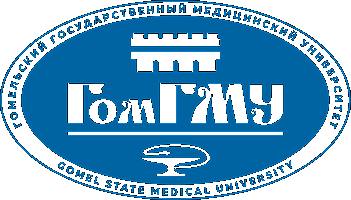| dc.contributor.author | Ларионова, О. В. | |
| dc.contributor.author | Дравица, Л. В. | |
| dc.date.accessioned | 2020-07-27T07:50:23Z | |
| dc.date.available | 2020-07-27T07:50:23Z | |
| dc.date.issued | 2020 | |
| dc.identifier.citation | Ларионова, О. В. Нейродинамические показатели сенсомоторного реагирования детей младшего школьного возраста с ортофорией и гетеротропией / О. В. Ларионова, Л. В. Дравица // Проблемы здоровья и экологии. – 2020. – № 2 (64). – С. 85–90. | ru_RU |
| dc.identifier.uri | https://elib.gsmu.by/handle/GomSMU/7158 | |
| dc.description.abstract | Цель исследования: провести анализ нейродинамических показателей сенсомоторного реагирования детей младшего школьного возраста с ортофорией и гетеротропией.
Материал и методы. Обследован 51 ребенок (102 глаза), возраст – 6-11 лет. Сформированы две группы, сопоставимые по возрасту и полу. В 1-ю группу вошли 20 пациентов (40 глаз) с ортофорией на фоне гиперметропии средней степени Hm 3,5 (2,3; 5,3) Дптр, 2-ю группу составили дети с содружественным сходящимся косоглазием на фоне гиперметропии средней степени Hm 4,25 (2,0; 6,5) Дптр – 31 пациент (62 глаза). Для изучения свойств нервной системы (НС) использовался аппаратно-программный комплекс «НС-Психотест» (ООО «Нейрософт», г. Иваново, http://neurosoft. com/ru). Были определены нейродинамические показатели сенсомоторного реагирования по методикам «Простая зрительно-моторная реакция» (ПЗМР), «Реакция различения» (РР), «Реакция на движущийся объект» (РДО), «Критическая частота слияния мельканий» (КЧСМ).
Результаты. Содружественное косоглазие у детей 2-й группы достоверно приводит к увеличению времени «ПЗМР», «РР» на 65,5 мс и 42,4 мс соответственно (р < 0,05) в сравнении с группой детей с ортофорией. Разность между показателями «РР» и «ПЗМР» у детей 1-й группы – 51,5 мс, 2-й группы – 28,4 мс подтверждает снижение скорости протекания нейродинамических процессов в НС у детей с гетеротропией. При исследовании по методике «РДО» время реакции в 1-й группе – -31 (-127; 50) мс, во 2-й группе – 22 (-29; 94) мс (р = 0,000008), положительное значение показателя времени реакции у детей 2-й группы является следствием преобладания у большинства обследуемых процессов торможения в центральной нервной системе.
Заключение. Из полученных результатов следует, что наличие гетеротропии у детей 2-й группы достоверно приводит к снижению подвижности нервных процессов и преобладанию тормозных процессов в центральной нервной системе. Сочетание низкой скорости реакции и выраженной инертности нервных процессов у детей 2-й группы указывает на рассогласование взаимоотношений между центрами зрительного и моторного анализаторов. | ru_RU |
| dc.description.abstract | Objective: to analyze the neurodynamic indicators of the sensorimotor response of primary school age chil-dren with orthophoria and heterotropia.
Material and methods. 51 children (102 eyes) aged 6–11 were examined. 2 groups that could be com-pared in terms of age and sex were formed. The first group consisted of 20 patients (40 eyes) with orthophoria associated with moderate hypertropia of Hm 3.5 (2.3; 5.3) diopters, the second group included children with con-comitant convergent strabismus associated with moderate hypertropia of Hm 4.25 (2.0; 6.5) diopters – 31 patients (62 eyes). To study the properties of the nervous system (NS), the computer appliance «NS-Psychotest» (LLC «Neu-rosoft», Ivanovo, http://neurosoft. com/ru) was used. The neurodynamic indicators of the sensorimotor response were identified with the techniques «Simple Visual Motor Response» (SVMR), «Discrimination reaction» (DR), «Mov-ing Object Response» (MOR), «Critical Flicker-Fusion Frequency» (CFF).
Results. Concomitant strabismus in the children of the second group reliably leads to an increase in the time of SVMR, DR by 65.5 ms and 42.4 ms, respectively (p < 0.05), in comparison with the group of the children with orthophoria. The difference between the indices of DR and SVMR in the children of group 1 – 51.5 ms, of group 2 – 28.4 ms, verifies a decrease of the rate of the neurodynamic processes of the NS in the children with heretotropia. In the study with the MOR technique, the time of response in the first group was – -31 (-127; 50) ms, in the second group – 22 (-29; 94) ms (р = 0.000008), a positive value of the indicator of the response time in the children of the second group is a consequence of the prevalence of inhibition processes in the central nervous system in most the examined patients.
Conclusion. The obtained results show that the presence of heterotropia in the children of the second group reliably leads to decreased mobility of nervous processes and predominance of inhibition processes in the central nervous system. The combination of the low velocity of the response and expressed inertness of nervous processes in the children of the second group are indicative of a lack of coordination of the interrelations between the centers of the visual and motor analyzers. | |
| dc.language.iso | ru | ru_RU |
| dc.publisher | ГомГМУ | ru_RU |
| dc.subject | эзотропия | ru_RU |
| dc.subject | зрительное восприятие. | ru_RU |
| dc.subject | функциональное состояние | ru_RU |
| dc.subject | нейродинамические показатели | ru_RU |
| dc.subject | esotropia | ru_RU |
| dc.subject | visual perception | ru_RU |
| dc.subject | functional state | ru_RU |
| dc.subject | neurodynamic indicators | ru_RU |
| dc.title | Нейродинамические показатели сенсомоторного реагирования детей младшего школьного возраста с ортофорией и гетеротропией | ru_RU |
| dc.type | Article | ru_RU |
